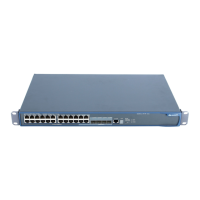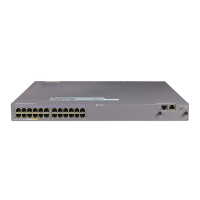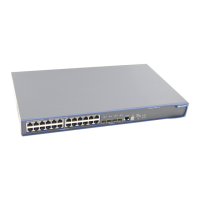Operation Manual - DHCP
Quidway S5600 Series Ethernet Switches-Release 1510 Chapter 2
DHCP Server Configuration
Huawei Technologies Proprietary
2-16
Operation Command Description
to DHCP clients
Configure
multiple
interfaces in
system view
dhcp select interface
{ interface interface-type
interface-number [ to
interface-type
interface-number ] | all }
to DHCP clients
Note:
To prevent malicious attacks to unused sockets and enhance switch security, S5600
series Ethernet switches provide the following functions:
z When DHCP is enabled, sockets UDP 67 and UDP 68 used by DHCP are enabled.
z When DHCP is disabled, sockets UDP 67 and UDP 68 are disabled at the same
time.
The preceding functions are implemented as follows:
z After you configure a DHCP interface address pool by using the dhcp select
interface command, sockets UDP 67 and UDP 68 will be enabled.
z After you delete the DHCP interface address pool by using the undo dhcp select
interface command and disable all the DHCP functions, sockets UDP 67 and UDP
68 will be disabled.
2.3.4 Configuring to Assign IP Addresses of DHCP Address Pools to DHCP
Clients
You can assign IP addresses by static binding or assign IP addresses dynamically to
DHCP clients as needed.
I. Configuring to assign IP addresses by static binding
Some DHCP clients, such as WWW servers, need fixed IP addresses. This is
achieved by binding IP addresses to the MAC addresses of these DHCP clients. When
such a DHCP client applies for an IP address, the DHCP server finds the IP address
corresponding to the MAC address of the DHCP client, and then assigns the IP
address to the DHCP client.
When some DHCP clients send DHCP-DISCOVER packets to the DHCP server to
apply for IP addresses, they construct client IDs and add them in the
DHCP-DISCOVER packets. The DHCP server finds the corresponding IP addresses
based on the client IDs and assigns them to the DHCP clients.

